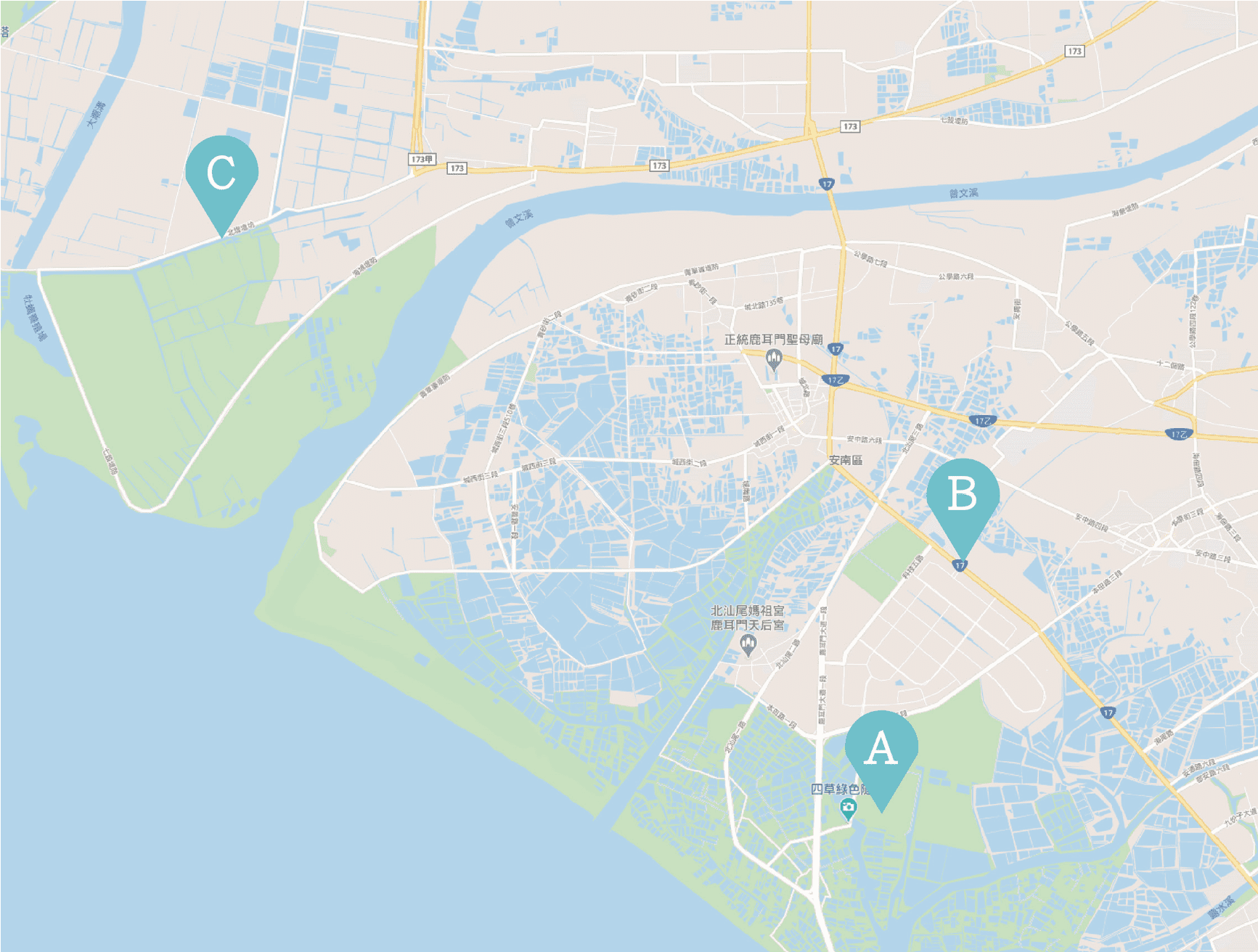

-
- 111th Academic Year
- The Avenue of NCKU Heritage – Area of Cultural Assets
- The Avenue of NCKU Heritage – Area of Environment and Ecology
- From country to city: Taveron and Han integration
- Kyrie: Pestilence and faith in the salty area
- Highlighting Western Chu-Wei
- Ginza: Commercial tracks from harbors to modern streets
- Tavocan and the Town of Hills
- The Museum: Ecological village and eco-museum
- The Stories about Major South Gate of Fu-Chen (Tainan)
- Modern new generation
- 110th Academic Year
- The Route of NCKU Students - The Cultural Assets Area
- NCKU Students' Route – Area of Cultural Assets
- Migration and Settlement of the Siraya Tribe
- Zengwen Creek’s nine bends and 18 turns, with astronomy, hydrology and humanities
- Exploring the Old Industries of Tainan City
- Journey of Beauty
- The Narrations of Water Resources, Agriculture and Livestock Industries
- Exploring Old Yuejin Harbor Area
- Lâu-Nuā Sió Sai Kha
- Highlighting Western Chu-Wei Area, Yu-Ler Street & Eastern Gate
- 109th Academic Year
- NCKU Students' Route – Area of Cultural Assets
- NCKU Students' Route – Area of Environment and Ecology
- Migration and Settlement of the Siraya Tribe
- Old Taijiang Inner Sea: Its Previous and Current Existence
- Lâu-noā Sió-sai-kha
- Exploring the Old Industries of Tainan City
- The Exploitation of the Works of Nature-Journey about The Frost and The Flower of Salt
- Badlands and the Mountain City
- Age-old Stories from the South of the City
- The Magnificent of Zheng-Xing Street
- 108th Academic Year
- The Route of NCKU Students─The Cultural Assets Area
- NCKU Students' Route – Area of Environment and Ecology
- Ecology of Fishery and Sea Salt Harvesting─ The Nature and Culture of Tai-Jiang Lagoon
- Migration and Settlement of the Siraya Tribe
- Age-old Stories from the South of the City
- Exploring the Old Industries of Tainan City
- The Narrations of Water Resources, Agriculture and Livestock Industries
- Technology and Humanities Science Park and Cultural Archeology
- From Kū-Lâu to Sin-Lâu Hospital
- Folk Delicacy around Minor West Gate Area
- 107th Academic Year
- The Avenue for NCKU Students
- Exploring Old Occupations in Tainan
- Secret Literary Path of Tainan
- Migration and Settlement of the Siraya Tribe
- Old Tai Jang Inner Sea: Its Previous and Current Existence
- Five-Canal Harbor Area: The Water Gods and Import-Export Tradesmen
- Tradition and Innovation: Zhengxing Street and the Grand Market(Da Caishi)
- The Water Resource of Tainan Area
- The Grace of Yanshui Harbor: Rejuvenation of Yanshui and Hopi Settlements
- 106th Academic Year
- The Avenue of NCKU Students
- Gate of Urn-Shaped Castle and the Stony Plates
- Siraya People’s Migration and Their Journey to Settlement
- Zeelandia and the Retrospective Anping
- Old Taijang Inner Sea (Taijang Nei Hai ) : Its Previous and Current Existence
- Tradition and Innovation- Zhengxing Street and the Grand Market (Da Caishi )
- Qing Dynasty Government Official’s Trail-Chunan Old Street and Zhenbei Fang
- Five-Canal Harbor Area, the Water Gods and Import-Export Tradesmen
- Fantastic Trips to Know Sugar and Salt production
- Chikan Park Area and Historical Traces
- Secret Garden of Literature- From Taiwan Administration (Taiwan Fu) to Tainan Prefecture Hall (Tainan Zhou Ting)
- The Water World of Tainan Area
- 111th Academic Year
-
-
-
Ecology of Fishery and Sea Salt Harvesting─ The Nature and Culture of Tai-Jiang Lagoon
Route Introduction

-
The cultural knowledge of salt pans gathers here; the wonderful wetland is rich; both human beings and birds live to their fullest happiness.
The coastal area of Tainan is rich in landscapes of the fishing and salt industry, covering districts such as An- ping, Ci-Gu, Jiang-Jun, Bei-Men, Xue- Jia, Jia-Li, and Xi-Gang, and others.Among them, Si-Cao and Ci-Gu are most spectacular. The history and culture of the salt-pan industry, and the wetlands,aquafarms, and lagoons rich in birds and fish families, can all be seen when students take this route.
The Si-Cao Salt Pan Cultural and Ecological Village was formerly the site of An-Shun Salt under the management of Taiwan Salt Company during the Japanese rule. Salt pans were once deserted, but with the migratory birds and rich ecological environment in the wetland, it becomes the Salt PanEcological and Cultural Village. Among the salt villages, students will see a "Whale and Dolphin Rescue Center and Refuge" created by Professor Jian-Ping, Wang from the Department of Life Sciences of NCKU. He led the rescue team and many volunteers to restore the viability of whales and dolphins.
It was followed by a visit to a very internationalized Water Conservancy Engineering Research Institute in Taiwan, the "Hydraulic Laboratory" located in the An-Nan Campus of NCKU (established in 1950), which is currently one of the world's top laboratories for water resources utilization and ecological balance.Lastly, we go north to the Ci-Gu coastal area (one of the twelve major wetlands in Taiwan). This place is an important wild bird habitat of Taiwan today and the winter habitat of the world's endangered species of black- faced spoonbill: a conservation species of migratory birds and the complete zone of mangroves and various aquafarms that provide fresh seafood and cultured fish.
Therefore, this route allows students to experience the changes occurred in the salt industry, the life of a salt village in the past, as well as the rich ecological resources of Si-Cao, the rescue process of stranded whales and dolphins, and the observation of the marine ecology, especially the real situation of the habitat of black-faced spoonbills.
-